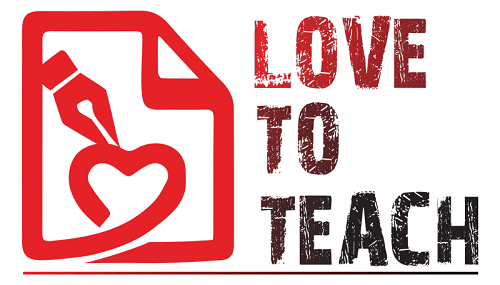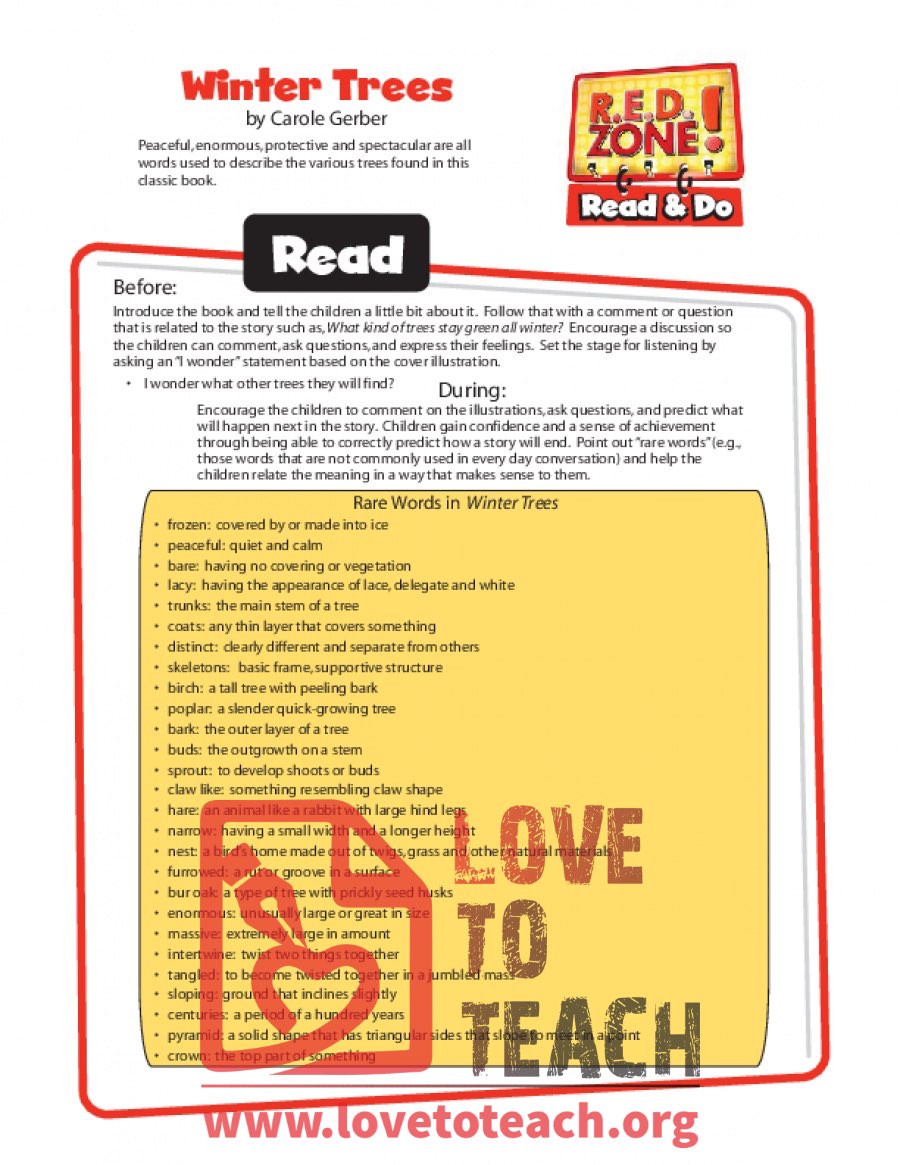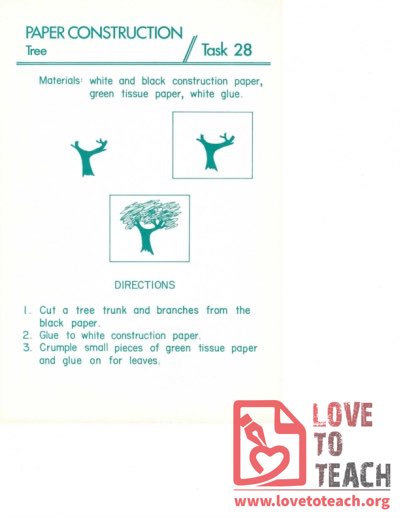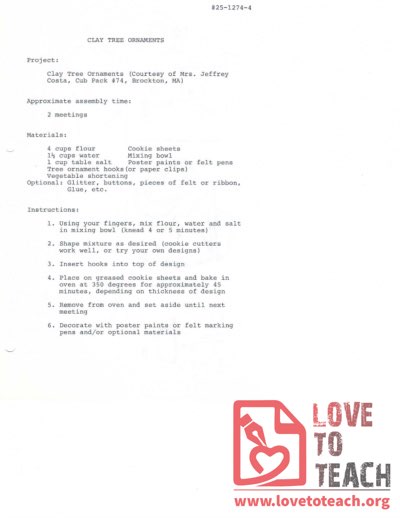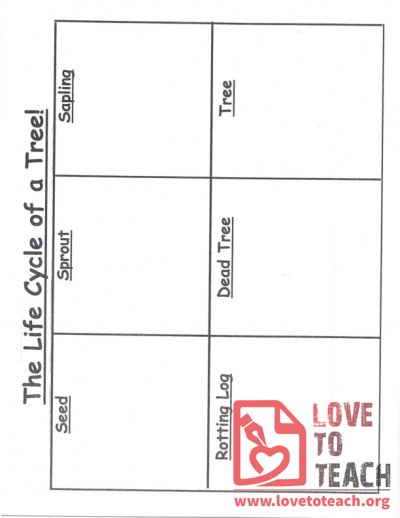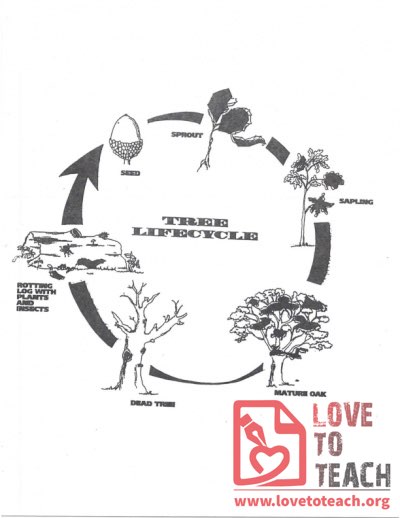Read
Introduce the book and tell the children a little bit about it. Follow that with a comment or question that is related to the story such as, What kind of trees stay green all winter? Encourage a discussion so the children can comment, ask questions, and express their feelings. Set the stage for listening by asking an “I wonder” statement based on the cover illustration.
will happen next in the story. Children gain confidence and a sense of achievement through being able to correctly predict how a story will end. Point out “rare words” (e.g., those words that are not commonly used in every day conversation) and help the children relate the meaning in a way that makes sense to them.
Rare Words in Winter Trees
• frozen:coveredbyormadeintoice
• peaceful:quietandcalm
• bare: having no covering or vegetation
• lacy:havingtheappearanceoflace,delegateandwhite
• trunks:themainstemofatree
• coats:anythinlayerthatcoverssomething
• distinct:clearlydifferentandseparatefromothers
• skeletons: basic frame, supportive structure
• birch:atalltreewithpeelingbark
• poplar: a slender quick-growing tree
• bark:theouterlayerofatree
• buds: the outgrowth on a stem
• sprout: to develop shoots or buds
• claw like: something resembling claw shape
• hare: an animal like a rabbit with large hind legs
• narrow:havingasmallwidthandalongerheight
• nest: a bird’s home made out of twigs, grass and other natural materials
• furrowed:arutorgrooveinasurface
• buroak:atypeoftreewithpricklyseedhusks
• enormous: unusually large or great in size
• massive:extremelylargeinamount
• intertwine:twisttwothingstogether
• tangled:tobecometwistedtogetherinajumbledmass
• sloping:groundthatinclinesslightly
• centuries:aperiodofahundredyears
• pyramid:asolidshapethathastriangularsidesthatslopetomeetinapoint
• crown: the top part of something
Before:
• I wonder what other trees they will find?
During:
Encourage the children to comment on the illustrations, ask questions, and predict what
After:
Discuss the story. Ask questions...
• What sound did the boy and dog make as they walked through the trees?
• Why were the trees bare?
• What kind of shapes did the trees look like?
• What was the sugar maple tree filling the bucket with?
• Which tree still had some tan leaves covering it?
• What kind of bark covers the birch tree?
• Why was the deer eating the buds of the poplar tree?
• Describe the bur oak tree.
• What fell off of the evergreen tree?
• What makes the evergreen tree different from the other trees?
• How long does a hemlock tree live?
• The white spruce stays green all year long. What covers the tree?
• Would you use leaves, twigs and cones to decorate a snowman? Why or why not?
• Which was your favorite tree in the book?
Do
After reading the story, turn to the last page of the book. Talk about the different kinds of trees listed and have the children describe each one. What makes the trees different? Similar? Take a walk around your school, local park or nature center. Describe the trees that you find, talk about the bark, trunks, leaves and whether the leaves will stay on the tree or not once winter comes. If applicable, try and match the trees you find with the trees in the book.
